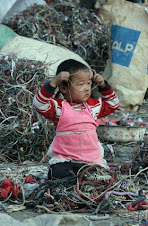European Parliament gets tough on WEEE directive
TechEye talks to TCO
07 Feb 2011 13:29 | by Andrea Petrou | posted in Business
0 Comments
Bookmark and Share
European Parliament gets tough on WEEE directive -
The European Parliament is tightening up on electronic waste policies, adding new pieces of legislation to the Waste Electrical and Electronic Equipment (WEEE) directive.
It has voted for tougher regulations on the disposal of electronic trash, requiring each country to collect 4kg of e-waste per citizen by 2012, and to process 85 percent of all electronic waste by 2016.
According to TCO Certified, the E-waste stream is growing at a rate three times faster than the overall waste stream. The organisation said that researchers estimate that the amount of global E-waste will be close to 73 billion kg annually by 2015.
Control your PCs and Macs over the web, get a Free Trial now!
Ads by TechClicks
The fact that only a fraction of the E-waste produced today is recycled responsibly adds to the problem. Computers and office electronics account for 40 percent of lead and 70 percent of heavy metals, including mercury and cadmium, in landfills.
It said this shows not only how polluting these products are but also what a waste of resources it is, according to the Basel Action Network the average PC contains up to 27 different kinds of metals of various hazardousness. Many of these metals are scarce and getting more and more difficult and expensive to mine.
Before the WEEE directive was put into force in 2008, both manufacturers and countries would export their electronic waste illegally to third world countries, where it was disposed of in unsafe ways.
Now the European Parliament has decided that it wants a higher collection target and a separate reuse target. Both were pushed through after delays from October with a majority of 580 votes to 37.
In addition MEPs recommend a 50-75 percent recycling target, and suggested a separate re-use target, initially set at five percent.
They also addressed the problem of large volumes of e-waste being falsely declared as ‘reusable' and illegally exported to developing countries.
To ensure these shipments are reduced, they want stricter inspections of deployments, as well as ensuring the exporter should carry the burden of proof that the goods are actually reusable.
According to Emma Sjögren at TCO Certified, this is especially important as these products contain halogenated substances and chemicals and materials containing chlorine and bromine are causing concern in developing countries without recycling facilities today. Uncontrolled Incineration of brominated and chlorinated compounds forms other compounds such as dioxins and furans, many of them highly toxic and, for example, carcinogenic.
"Many of these substances are known to have serious health and environmental effects (most substances are not yet tested). Brominated flame retardants have been used for over 30 years to prevent the ignition of a material and limit the spread of fire," she told TechEye.
"The purpose of flame retardants is to provide protection throughout the product lifecycle. Therefore, they are deliberately constructed not to degrade meaning that once in the environment they persist, often transported by air and water far away from the initial point of pollution.
She added that it was primarily when the IT products were scrapped that problems arise.
"The substances containing bromine and chlorine leak out and, because their degradability is poor, they remain in the environment for a long time," she said.
"Only a small proportion of the world’s electronic goods are reused in a controlled way – for example, large numbers of end-of-life products are shipped to Asia or Africa where they are burned in backyards without any protective equipment – so this is a major and growing problem."
TCO added that as long as these chemicals were used, and the recycling of electrical products are not controlled, the quantities of brominated and chlorinated flame retardants in the environment will increase.
"Even if their use were discontinued today, they would remain in the environment long into the future," Emma added.
Monday, February 7, 2011
Subscribe to:
Comments (Atom)













